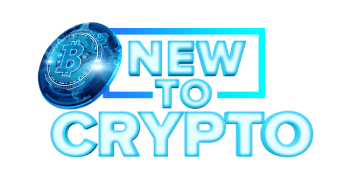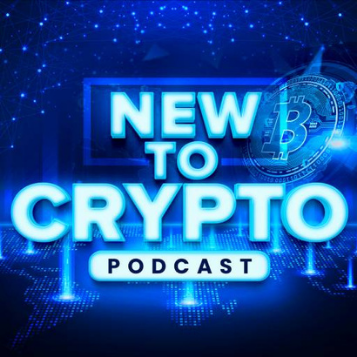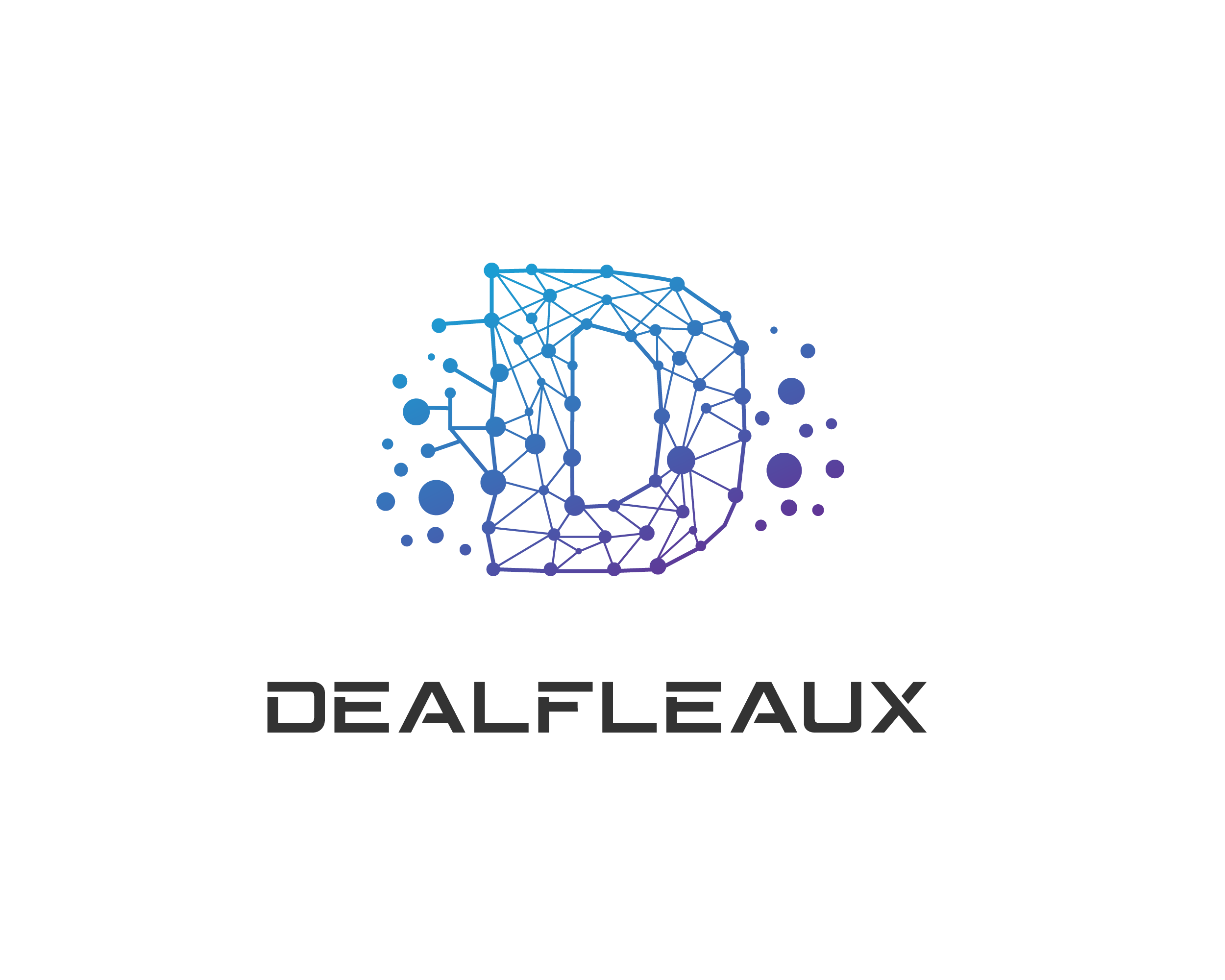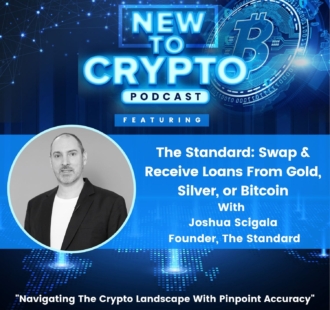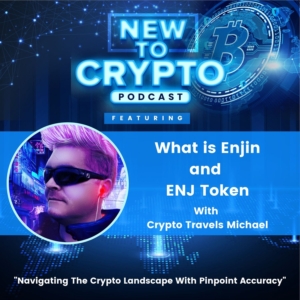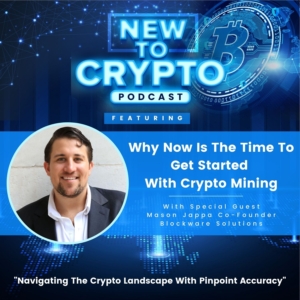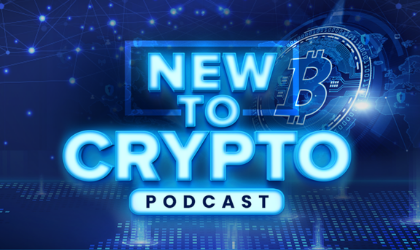The Standard Interview
SUMMARY KEYWORDS
bitcoin, crypto, assets, gold, minting, buy, liquidated, money, borrow, smart contract, euro, Switzerland, token, USD, coin, the standard
SPEAKERS
Joshua Scigala, Crypto Travels Michael
Michael 00:00
Welcome to the New To Crypto Podcast designed to guide you through the crypto landscape with pinpoint accuracy created for the new and intermediate crypto investor. Join your host Crypto Travels, Michael as he takes you through the different facets of getting started and succeeding in your crypto journey. New To Crypto Podcast brings you new episodes daily, Monday through Friday with surprise bonus episodes sometimes on the weekend. Let me ask you, Are you new to crypto and don’t know where to start? Are you more experienced but have questions? Then you’re in the right place. This podcast is designed for you coming at you from the training center in the lifestyle design studio. Here’s your host Crypto Travels Michael. Hey, welcome to today’s podcast. I’m excited about today’s show, I have a legend, somebody who’s an original person that got into Bitcoin and crypto in 2010. And I’m really excited about this chat and this interview today. He is the founder of Vaultoro, which is where you can store your golden silver bars securely in Switzerland. And he is also the founder of what’s called the standard which we’re going to talk all about today. And it basically involves receiving loans or leveraging off of your own assets. So please welcome Joshua Scigala to the show, Josh, it’s a pleasure to have you here. Hey,
Joshua Scigala 01:32
thank you very much, Michael, it’s an absolute pleasure to be on the show.
Michael 01:35
Hey, man, before we dive in, can you just share with our listeners around the world? Just a little bit about yourself?
Joshua Scigala 01:40
Yeah, sure. So it was actually I, I’ve always been really fascinated by alternative economies. And I started the world’s first swap site where people would swap clothes and stuff instead of buying and selling because I was interested in, you know, building up alternative economies, especially after, after 911 happened. And I sort of deep dive there and realize, you know, follow the money and all sorts of weird, sketchy and I was like, Hey, let’s, let’s try to build an alternative economy, you know, after you sort of find out about central banking, and all that stuff. And so I did that. And after a while, I realized that swapping is just a terrible way of doing anything. Because if I really love your shirt, and you look through all my stuff, and you go, I don’t like anything this guy has, then that deal falls through when you know, it’s beautiful. If I could then give you a token, and you’ve got the rest of the marketplace to, of course, you know, get something. And then you know, then I started thinking, okay, how can I build a token, but I don’t want to be a central bank, because I’m just reinventing the same old crap. And so I started looking and I found what the cipher the cypherpunks were trying to do on their mailing list. And, you know, it wasn’t really there wasn’t there at all. And, I just figured it’s an unsolvable problem, the double spend problem, and so but I kept my ear to the railway, so to speak, and sort of kept an eye on what people were doing in terms of digital currency. And in 2010, Satoshi’s paper came across my, desk, and I just loved it, I just thought, wow, you know, she’s, she’s done, it just solved the problem. And, and so, so then I basically fell in love with the protocol and have, you know, videos of me in 2011 Telling people it’s not a scam, it’s not a tulip bubble, all of this stuff, which is actually the same thing we’re still seeing nowadays, less of sorts, in a way because, you know, people understand what a real number is and how it works. But yeah, so that’s how I found Bitcoin. And then of course, in I think, 2014 I lost a lot amount of money in the first Bitcoin exchange collapse, which was Mount Gox. And, and so I thought, you know, this was a string of hacks and stuff that was happening at the time and I thought, man, we were sitting on a revolution of money and, and financing and global banking. And these idiots are raining on a parade so grand, that they don’t even understand that they are for a little bit of gain, you know, so I set out with my brother and Bill wanted to build actually a decentralized exchange. And the trouble was a theorem didn’t exist then. And I, the opportune code, which is the programming language behind bitcoin really wasn’t well, it didn’t have the ability to create what we wanted to create. So instead, we focused on transparency using the blockchain instead of dealing with Fiat because all the exchanges still now only deal with Bitcoin and Fiat or some dude Bitcoin and crypto and other crypto and stuff but generally it was just Fiat and there were no real stable coins back then. And that people were getting their bank account shut down all the time just for touching crypto, you know, and so we wanted to basically say, Hey, we got into Bitcoin to get away from banks, yet we’re pricing everything and fear. Let’s build the first exchange that deals in allocated physical bullion gold. So Bitcoin is now priced in grams of gold. And we launched that in 2015. And, and we’re still going strong nowadays, it’s called volterra.com V. Au ltro.com. And, yeah, it allows people to, to basically trade between when bitcoins high they buy physically allocated gold sitting in Switzerland, high-security voting facility and fully insured and audited. And it’s their gold. So if anything happens to us as an exchange, it doesn’t matter. Because it’s an allocated product. It’s very, very different from a bank, where when you put money in a bank, it’s not your money anymore. It’s their money. And if they go broke, well, they’re insured, maybe depending on what country you’re in. Ernie, in short to Latin America, 250k and Europe 100k. So it’s, whereas gold can be insured to however much you’ve got because it’s a physical good. And yeah, yeah, so long story,
Michael 06:15
what so many, so many gold nuggets there? You know, I mean, I did see that video of you on YouTube in 2011. You know, talking talking about Bitcoin, and I can’t imagine what that would have been like back then to talk, you know, to proclaim to the world about Bitcoin? Of course, we all know where it’s come from now. Yeah. And yet, thanks. Thanks for that intro about vaultoro. Before we dive into actually having some more questions about since you were one of the originals in I have a lot more questions about that. But can you share for listeners just a little bit about like the standard? And what that is, since you touched on vaultoro? Yeah, sure.
Joshua Scigala 06:52
So, you know, in 2019, I was asked to give a talk at Lubbock calm, which is the Latin American Bitcoin Conference. And on the way there, I read the white paper of Terra Luna, which had just launched. And, okay, and sitting there thinking this is just shocking. This is and this is, you know, for those that don’t know, Terra Luna isn’t original like there’s been a lot of algorithmic purely algorithmic stablecoins before then, that was trying to solve this issue of not backing anything, but by any code or just backing it by code basically. And, and I got, I got in and just thought this is shocking, I’m gonna have to talk about this. So I got up on stage along with Neville from the reserve, and we basically tore it apart in a panel and said, This is going to there’s going to be an algorithmic stablecoin that’s gonna get absolutely massive, and then absolutely, just get, you know, destroyed and everyone is going to lose their shirts. And then we’re going to have the government stepping in with super with superhero costumes on saying we need to regulate the space and basically create new moats where the legacy banking system can say, Look, we’re so trustworthy, we should be doing this instead of because Jared Luna wasn’t the first there was, you know, waves. There was BitShares from Dan Larimer, though, there’s a whole bunch of things that were that came along before that also failed. So this wasn’t the first. And so I came back from there thinking, I think we’ve got to start the ultimate stablecoin protocol that’s fully backed by Rare numbers and rare metals. And we took a lot of inspiration from Maker Dai, where you would lock up assets and borrow against them. And this works very similarly to central banking, where, where they would give interest rates either up or down to stabilize the currency. So maker has dye that is pegged to the USD. And if the dye falls below $1, then they’ll lift interest rates basically, on everybody that’s borrowed dye from themselves. I’ve gone a bit deeper here, but nevertheless, it’s a fully collateralized stablecoin, which has got more assets backing it, then than stablecoins floating around. So there’s more Bitcoin more Aetherium actual physical gold and some stuff like this backing, and it’s issued by people borrowing money from themselves. And we can dig a bit deeper into that later on. But really, it was about built finding a solution that was truly transparent, but also scalable, while having an ability to have base money without interest as well, which was key. So I wanted to find a pegging mechanism that didn’t have interest at the base level of money, which I find it’s a little bit it just doesn’t sit right. And, yeah, so that’s why we created the standard. The standard, of course, comes from the goal Standard. And it was one of those sorts of ethos is like, we don’t need to wait for a government to create a new gold standard for all those gold bugs or Bitcoin of that, like, you know, we just don’t need to beg the state for a gold standard, we can now have a voluntary one by locking up assets into a smart contract, and then borrowing against those assets and having the value of the borrowed assets really backed by what you’ve locked in the smartphone.
Michael 10:28
Hmm, I love it. I love it. Actually, I have a background in the precious metals industry. So yeah, we’re, we’re speaking the same language right here. Just before we get into some more details with the standard, you mentioned that like the Bitcoin white paper came across your desk in like, 2010. Okay, it did not come across my desk. So can you give us a little more of that origin story? Because I didn’t hear about it for years later. But yeah, give us some, some more gold nuggets as to, you know, you got into
Joshua Scigala 11:00
you know, like in the beginning, it’s very, very, like, original Bitcoin cutie which it was called The software was called before it was called Bitcoin Core. It was very, very clunky and crappy. And you told anyone about it, they just didn’t understand because there wasn’t this zeitgeist, of general understanding at that stage, so you would tell anyone, and they go scam because you’re talking about fundamentally, like money, fundamentally. And you’re now saying, it’s created out of thin air. So it’s not like created out of thin air like Fiat. So gold bugs were like, Nah, it’s created out of thin air. And normal people were like, what? I’m fine with my money. There’s no inflation. I’m, you know, yeah, we had 2008. You know, it’s, it’s horrible and, and stuff, but they’re regulating the banks now. And, why would I trust some anonymous guy, you got to remember, back then, the only use case was buying drugs on dark markets. And the media really grabbed onto that story, because it’s a hot headline, right? Like, wow, new, like, drug marketplaces and, and stuff like this. And, then WikiLeaks got banned, and PayPal, block them and visa blocked them, and, basically, they got annexed away. And the only way to get funds was to accept Bitcoin and Satoshi Nakamoto. At the time was like, no, no, don’t do it. And we’re like, Nah, screw that you can’t, you know, this is an open source thing. We this is important. And, so we just went ahead and did it, he thought, or she or they thought it was basically too early, and it would, you know, bring the Eye of Sauron onto this protocol. But so it was very, very difficult in those early days to basically convince anybody that this is a good thing. And so even if the white paper came across your table, it’s very unlikely unless you had a backstory of interest in digital currency that you would have even taken notice of it not you, maybe you would have, but in general, people generally just sort of went with
Michael 13:21
it was originally like, what just developers small community, like, were you active in, like developer community or alternative money ideas at the time? Like, how, how did you get exposed to it? And in the beginning, yeah,
Joshua Scigala 13:35
it was basically through swap style, which was this swapping platform. And like I mentioned, I just realized that swapping just wasn’t doing it, there were a lot of deals falling through big. And there was this whole community. And I think if there was a credit system, that was that I wasn’t issuing, because I didn’t want to, as the website owner, say, Oh, now here, I’ve 100,000 credits that float around, because now like, how do I, and I need to, like figure out how many credits to mean, and then I get inflation. And then and, and at the time, as well, it’s, you know, we had like Liberty Reserve and other people trying to make their own money. And they basically would get taken to jail and get shut down. Because, you know, money laundering was the big excuse, but actually, the state just doesn’t like competition and private money. They don’t like it. And that’s why Satoshi was anonymous. He didn’t want to take on the global central bank in the IMF, that the governments that these are all big players that the oil industry even, you know, because of the petrodollar, right? So, so, it was a very different time to now, and because Bitcoin is you just can’t shut it down. They’ve just had to deal with it. And now people are more comfortable with saying, Hey, I’ve now launched the coin. And it seems normal now, but it’s a very, very different time.
Michael 15:00
Mm-hmm. And you’ve got to see it evolve over all these years, you know, from, from the beginning to you know, I mean, we’re seeing major global brands now, you know, talk about it. We’re seeing it taught in Ivy League universities around the world, you know, it’s in the supply chain. I mean, if it’s not Bitcoin, it’s definitely blockchain and crypto. And it’s next-gen, you know, but you’ve got this a web three, you know, there’s web four coming, by the way, and we’ll share some of that next year with y’all. Yeah, some phenomenal things. So, share with our listeners, you just touched on vaultoro. Right. Okay, so let’s say I want to buy gold bars and store them. You can offer that to me with vaultoro. Right? Yeah,
Joshua Scigala 15:49
that’s right. So the main, the main problem we were solving there at the time was transparency. The exchanges just were not transparent. So we invented a transparency protocol called the glass box protocol. And this was basically a way for anybody to audit us without us knowing that they were doing it. Peter Todd, and Gregory Maxwell, who were some of the original cypherpunks, did develop Peter tides as a crazy guy, by the way, he was like 14, when he was in the cypherpunks mailing lists, talk, you know, trying to solve the double spend problem. You know, we got some crazy, like peeps in this industry, crazy smart people. Anyway. So they built a transparency protocol called I forgot what it’s called. But basically, it’s very complex, like it’s easy, actually, for the user, because all it does is check what’s called a Merkle tree. And it sort of hashes a whole bunch of stuff together and just gives you a green tick at the end. But for me, it wasn’t really grandma friendly, you kind of as if you didn’t understand what was going on, you didn’t know how to verify it, you just saw a green tick. And then what does that mean? So I really wanted to build a system of transparency that you could so what we did is we gave every user, an anonymous ID, that only they knew, and we knew as well because we would issue it. And then we would tell the user look, you can log out of the system. So we don’t know that you’re checking and we publish on the public side, every anonymous ID and how much gold and how much Bitcoin they’ve got. And then they can sum up, they can first check their ID if that’s right, like, oh, yeah, that’s, that’s how much gold I’ve got. And we don’t know that they’re checking. So we’ve got to keep it there. And then they can sum up all the gold and then they can compare that to the gold voting facility paperwork, the insurance paperwork, the auditing paperwork, and make sure that that that’s all above board, and was out and then on the Bitcoin side, you could check against the blockchain, right? You can add up everybody’s Bitcoin holdings, check the public addresses and see, ah, that’s how much Bitcoin there is. And, and, and so that’s part of it. But the other part of it was that when mount Gox went down, which was the very first Bitcoin exchange, the people lost a lot of fear as well in that, and because of that whole thing, where it’s, it’s not your money anymore, you’ve put it in a bank, it’s their money. And not only that, it’s actually not even that Gox is money, it’s the bank’s money. So either the bank could go broke. So there’s a Counterparty there, which we saw in 2008, or mount Gox could go broke. So you’ve got these two counterparty risks. And so we thought, why not just allow people to trade to physical gold that’s in their name as their legal property fully insured, fully audited, and get then be able to sell that gold back to Bitcoin at any time using an order book. And that’s, that’s really what we built. So it sort of allowed people to get sort of get out of the banking system, because that was kind of the goal of Bitcoin, but still have that beautiful, rare metals and rare numbers working together. And this is why I never got the number understood this whole Peter Schiff point of view of like Bitcoin, you know, it’s terrible. And even like, Barry Silbert, saying that you know, drop gold, it’s, it’s old, as you know, the sort of war against Bitcoin of God seems to me really superfluous, rather than saying we should work together and drop Fiat, you know, that’s, that’s what we should be doing. And, this is the old old guard, sort of libertarian anarcho-capitalist sort of philosophy, philosophical stuff going on here. But, really, that was the goal. And we sort of strayed away from that and that’s really what Victoria tried to solve
Michael 19:59
for Fantastic, fantastic. So how does the standard work? And like how’s it pegged to the euro or any other fiat currency for that matter? And then ultimately, how does it tie into what you have going? vaultoro?
Joshua Scigala 20:14
Yeah, sure. So, what we wanted to do was, we wanted to look at basically four different vantage points for the standard, the standard had to be provably over-collateralized, in the fact that there’s more value locked up than there are stablecoins floating around, so it couldn’t go to zero, like, like Terra Luna. And then the second one was, we want to, we don’t want interest pegging the system. And, we don’t want and we want to peg to as many fiat currencies as possible. So we don’t just want to be USD based. And, and it, there’s a couple of other things like cross-chain, minting and stopping people getting liquidated and stuff like that, which I can go to as well, but, but they were the key ones. And so what we thought was, okay, we want basically what we’ll start to do is we’ll have like an initial bonding curve offering sounds like a complex name, but basically what it is, is it allows people to send Aetherium or Bitcoin or USDC and USD T and stuff like that into a smart contract. trustless, and the more people and then say, let’s, let’s say they put $85 Worth into the smart contract, they would get 100 euros worth out. So you know, your own dollar kind of one-to-one at the moment. So. So it’s like a discount code of offering and what would happen, the more volume that went into the smart contract, the less that discount would become so until it reaches a one-to-one. So as more and more value comes into this pot into this liquidity pool or this stability pool, it would basically, finally reach a one-to-one, so it would go from 80 cents to a euro because the Euro is the first stable coin we’re launching because there are so many USD ones we thought let’s let’s focus on the newer. So you’d sell it at 80 cents, then as like maybe a million comes in from that, then you go to 79 set, you know, so 8182 83, and then eventually you get to one to one, and at that stage, then we become a stablecoin. Before that, it was still the initial minting event. And, so people have instantly like a 20% return on that. Which is really good for them. And it’s really great for us because we build this big liquidity pool. Because at the end of the day, what is a stablecoin? The only thing that really pegs a stablecoin is can I get it? Is it a Euro-stable coin? Can I get one euro worth of something else with it? Can I get one euro whether the theorem or go, you know, whatever, or a euro and swap with one-to-one? Sure everything else sorts of doesn’t really matter. It’s just a means to an end to that end. And so really that was kind of the first initial way we’re minting it’s kind of the initial phase. And then the second phase to that is, okay. There are ways for there are yield farming opportunities after that that helped us because as you probably noticed, at that moment, we’re still under collateralized because it was sold at a discount, right so so there’s a second phase where people can add liquidity to the pool and get a really nice yield. So that attracts the yield farmers that are very quickly getting us over collateralized. This is sort of the first phase and then and then we’ll be launching what’s what we’re calling private smart vaults. So these smart vaults, what it’ll allow you to do is I had the problem that I needed to move into a new apartment and I had to put up you know, I was renting outside put up some deposit. So I had to sell like, I was like 80 Bitcoin or something at the time. Just for the deposit for a rental, like very painful. And, and instead what I could do with the standard is actually take that Bitcoin, and put it into a smart contract that I control the keys to I’m not sending Celsius or to vaultoro to an exchange, I’m sending it to a smart contract, and then I lock it. Now let’s have let’s say I have 2000 euros worth of value locked in that smart contract. Then I can borrow up to 100 So 85% of that. So I can, I can, you know, let’s say I borrow 50% of that. So I put 2000, then I borrow 1000 euros that are minted, and basically that that Bitcoin or Aetherium, that wraps Bitcoin or Ethereum sits in that smart contract. And now I’ve got, you know, there’s 2000 locked up, and there’s 1000 floating around. And so now that’s, that’s how more SEO comes into circulation. But it’s ag through an interest rate, you borrowed that from yourself. So you’ve now got value. And when you how do you get that value out that you’ve locked up all you have to just send that s Euro back into the smart contract, it gets burned and unlocks the value that’s inside. And, so this mechanism is really beautiful because it allows people to borrow money from themselves. They don’t need to go to a bank anymore, they can borrow liquidity from themselves without selling the asset. Plus, you’re not smacked with capital gains tax because you haven’t sold anything, you’ve borrowed money. And not only that, you can unlock liquidity for people that are finding it hard to save a lot of people on how to save because they have to, you know, buy food and rent and everything else. And they don’t have enough leftovers to really put into savings. But imagine if you could put it into savings, borrow from yourself, and hate liquidating you had to sell it anyway if you didn’t have that option. So. So it’s a really nice way for people to break that, that poverty cycle as well, where you sort of living not, you know, from paycheck to paycheck, and you don’t really have enough resources to sort of save, which is a really important part. And the other beautiful thing about this mechanism is inflation works for you. And you know, many people say how the wealthy protect themselves in inflationary cycles. Well, what they do is they borrow the hell out of it. But very wealthy people can make really good deals with banks, right? They go in and they talk to the bank and say, I want to, I want a fixed interest rate that isn’t going to get revalued if we go into a hyperinflationary cycle. And the banks usually do that, well, I’m not going to borrow this if I’m going to
Michael 27:21
go to another bank. So the bank, their business,
Joshua Scigala 27:24
yeah, they want your business. So they’ll write that, but the normal person can’t really say, you know, demand this sort of thing. And so rather, imagine if you could lock up assets into a smart contract, and then borrow money from yourself. And let’s say you borrow, I don’t know 10,000 from yourself, now, and then in five years’ time that 10,000 is worth like the price of a carton of milk, then you’ve effectively paid off your loan with the price of a carton of milk. And so this is really what’s happened in the past is that the wealthy would take up huge mortgages at the fixed interest that couldn’t get revalued by property buy real value, like rare, rare, you know, property, forest, the gold, you know, whatever they could get their hands on. And then And then, you know, let inflation pay that off for them.
Michael 28:20
Interesting, thanks for unpacking out with all of our listeners. So let’s go I’m following you, as you’re unpacking this, you have like the standard token, right, the T S T token. So walk us through, like, let’s say, you know, the process, you know, let’s say you have your own assets, we have, let’s say we have a gold bar, for example, and then break it break down how the standard token like operates. And because I assume we would receive the TST token in exchange for when we lock up the assets in a smart contract. Is that right? No, so
Joshua Scigala 28:59
So what you don’t really because you have total control of that smart contract, there’s no you have the private key, you can unlock it at any time, it’s just unbelievable, and needs to be paid back. So okay, if you’ve, if you’ve imagined a vault, like a little safe, and inside there’s a bill dispenser, you can lock on the money inside lock the safe, and the bill dispenser would give you half the value that’s in there, but it would only unlock the safe. If you put those bills back into the dispenser, then it will unlock the value so so what the TST does, the TST is a membership token slash governance token, but it also allows people to earn staking rewards. So there’s no interest in the system. So people that have a large mortgage. I’ve heard people say I’m going to I’m going to basically lock up Bitcoin, borrow from myself, pay off my mortgage, and now my mortgage is at 0% Rather than these two large things. So but to do that there’s a minting fee. So there’s a small minting fee, on that. When you generate when you meet the SRO and all those minting fees. And as you as the first one, there’ll be the great British pound, there’ll be USD, there’ll be Indian rupee, rubles, all of
Michael 30:25
them. This is what someone receives when they receive the loan off of their asset that’s locked.
Joshua Scigala 30:30
So no, so they can buy TSD off the free markets and free-floating governance token slash membership token, what they can do,
Michael 30:37
I mean, like, Euro, stablecoin. Yeah, exactly what they receive when they get 50% of the value of their asset.
Joshua Scigala 30:47
That’s right. That’s right. The first one, we launched him with his SEO, but they can, you know, the next thing, what we’ve been doing is launching SUSD Indian rupee and the rest of them, especially high, high inflationary places like Turkey, the lira would be a wonderful stable coin to release because inflation would pay off these debts that people have. So it was but So, so what, what you do then is people staked, they buy some tasty, they stake it. And every loan that gets created around the world, imagine if you could get a cut from every single loan generated around the world. And that’s pretty much what TST allows people that they lock up assets, they can vote on the direction of the protocol. But they can also get rewarded for doing some of that work in all of the income that’s generated, that they have to do some work for it. But it’s very minimal. And it’s, it’s, it’s just a way of allowing a decentralized mechanism of the steering of the ship. Because really what we want to build it at its core is a decentralized mechanism that is steered by these holders, these TST holders, they get paid for making great decisions on the direction of this stablecoin protocol.
Michael 32:08
Okay, and to just finish completing the transaction for our listeners. So let’s say we lock an asset, you know, in a smart contract, we receive s Euro, for example. So can we swap the SEO? Like how can our listeners turn that and access it into like cash? Yeah, right. So initially, because I just had a friend who just bought an SUV with his unfortunately his Bitcoin he could have used this
Joshua Scigala 32:37
year though. Yeah, absolutely. I bought a Tesla, with that same mechanism as the maker I had locked it up in a bar. And I bought the cars, I didn’t have to sell them. But back in the day, I didn’t have to because, you know, the thing is just don’t the direction a lot of places going like Celsius, people did this. But Celsius was a centralized entity, that, of course, speculated with people’s assets and did all this jiggery-pokery It was basically Wall Street meets Dejan defy it was a bad mix, right? So what you want to do is lock up assets into a thing that can’t be touched by anybody and can’t be speculated with anything. Yeah, it’s not the annual yield. It’s but it’s, it’s going to hold its value and hopefully go up. Sorry, just go back to your question.
Michael 33:27
Yeah. So how do we swap the s Euro into what most people would just call cash, right? So how can they buy that car or, you know, pay the kid’s tuition,
Joshua Scigala 33:38
you know, so, Volterra is the first exchange to offer s Euro two euros swaps. But they’re also we’re talking to other major exchanges as well. There’ll be DEX’s, as well. So you can exchange that as euro to then Ethereum, and then go to an exchange Coinbase and swap your theorem to cash that all this stuff happened. Of course, it just takes a little bit of time to set that up. But there are also youth farming opportunities. So I like that. Yeah, in the initial phase, people are paying students like negative interest rates here in Europe, it’s starting to change now. Because of the inflation people like, you know, governments are trying to slow down inflation by lifting interest rates, which is actually a very, very typical thing to do. And it basically makes it worse because people start losing their jobs and start, you know, the economy is it’s really on adapt slows
Michael 34:30
down. It does the opposite to you.
Joshua Scigala 34:32
Yeah. I mean, they should have done this a long time ago, they should have lifted interest rates 678 years ago, but instead, we’re just hungry on crack wanting more and more, but nevertheless,
Michael 34:46
thankfully, you created a solution for our listeners. This is a way that they can borrow from themselves and it’s protected. Yeah,
Joshua Scigala 34:55
I mean, I can’t take all the credit either a team of extremely smart and wonderful people. Blue around me all working tirelessly. I’m, you know, I’m just another cog in that in the, in the machine. But yeah, It’s wonderful that this exists because imagine being able to then put that SEO to work in real-time. So in our initial minting mechanism, even what we what we’re doing so stage one I explained before where people put the theorem or Bitcoin into this pool to build up the stability pool, and then holding all this SEO and what do you do with it because it’s fresh, it’s not there’s not much going on we’ve made partnerships with, with a whole bunch of different projects where you can use it, but really, what you want to do is earn more on that. So we’ve given people the option to take that SEO, take some more USD T, put that into a liquidity pour on uni swap, and sell that to us for a swap of a bond. And we buy that liquidity off of them for a higher yield like a really quite good yield. And so they can, so that’s stage two, so they’ve got something to do plus it earns them even more. And they can choose that maturity date on that. So we’re sort of making it very, very rewarding, the longer the maturity date is for this bond. But, okay, that’s to make sure that people don’t just dump TST because they get paid in tst. for it. So okay, well, yeah, I mean, it’s all very complex, you can go over to the standard IO to, you know, read more details or join the community. Actually, that’s probably better, because you can ask lots of questions there.
Michael 36:45
So how, okay, let’s say I lock up my assets, right? I received the SRO. Okay, how am I protected against, say, being liquidated? Yeah, because I know, like a lot of traders listen to our show, like, they’re gonna be thinking the same because you actually got me thinking in a lot of different options. And what I might want to do personally, so this is, this is good going down this rabbit hole.
Joshua Scigala 37:08
We’ve seen massive liquidations in this bear market happen and something that makes us very intransparent. Though it’s pretty centralized, it’s very cliquey, who can buy these liquidated assets? And so we wanted to really, first of all, open it up. So there are two ways people can stake tst. And, if someone does get liquidated, they’re there to buy those liquidated assets under market value under 15%. Because you borrow up to 80%, right? So you have to be over-collateralized so that that difference allows you to buy those liquidated assets under market value. So that’s a really strong incentive for tst stakers. To stay there. That there and what happens when they buy that they get those assets that are locked in that smartboard. And they burn the escrow. So that makes sure there’s always less as you’re floating around, then there are locked-up assets. But on the borrower side, of course, you don’t want to get liquidated and we want to try and do as much as possible to stop liquidation. So when
Michael 38:12
can you add more assets? So you don’t get liquidated? Yeah, absolutely.
Joshua Scigala 38:15
So you can add more assets, you can, you can pay back the loan. Another thing you can do, if you can’t afford to pay back your loan, what we’re doing a lot of r&d on is to be able to sell that, you know, it’s basically a collateralized debt position, right? It’s a CD, to sell that smart contract as an NFT as a nonfungible token to someone else, and then they can unlock that by paying it off the loan. So you say like, oh, man, I, you know, I’ve just lost my job, and I can’t pay off the debt that I took out of myself, I’m gonna, I don’t want to get liquidated, I’m going to sell it to someone else as an NFT. One thing you can do, so you can at least get some money back. And the second option is that there’ll be a switch for automatic collateral trade within the smart contract. So to tokenize gold, because there’s no point trading over to Bitcoin to Aetherium or something like that. Because when the market, you know, really starts shitting itself, it doesn’t matter. What, what, what crypto asset you’re in? Even gold kind of follows that a little bit, but at least it’s on a slightly separate train track. It’s not, it’s not absolutely following the market and it definitely doesn’t collapse as hard. So, what you can do is you basically set a switch to say, Okay, this is my threshold, when the threshold automatically trades to a tokenized gold, the under the assets that are locked up, and so it sort of helps you. Of course, if gold goes down, there is still that liquidation process, but that’s okay. They’re the options that you have. Yeah.
Michael 39:59
Let me ask You like so like, I have my asset locked in the smart contract I received the s Euro? Is the loan timed in my servicing the debt? Is it? Can I pay it back anytime? Like, is it a specific amount of time, how does that work?
Joshua Scigala 40:13
It’s timeless, you can have it for as long as you want, and there’s no time and there’s no interest, it just has to pay it back to get the collateral, which is valued more than you borrowed.
Michael 40:26
Okay, so you just when you borrow, you just pay it all back, and then you receive your asset. And you can come back and do that. Whenever?
Joshua Scigala 40:34
Yep, yeah, exactly. Yes.
Michael 40:39
Yeah, this is awesome. So share with our listeners, the things to come for, the rest of this year and into 2023. With you and your team.
Joshua Scigala 40:49
Yeah, I mean, we were just heads down working, you know, bear markets are a very terrible place for, for a lot of people. But for people like us building, we were quite clever with what we did. With the initial funds that we raised to start this project, we hedge the light and gold and, you know, we’re not, we’re not gamblers, we’ve run Vaultoro on the smell of an oily rag since 2015. With were, where we’re quite conservative with that. So we’ve just been headed down the building. And really, that’s what these bear markets are about flushing out all the crap projects and letting the strong projects build. And, so that’s really what we’ve been doing. What’s happening now over the next few weeks is that we are releasing kind of a waitlist, which by the time, this broadcast comes out, that’ll be live. So you can go on to the standard dido.io and then basically put in your email, and then you were giving a whole bunch of like little air drops plus rewards and stuff to because we’ve, you know, we’ve kind of been in under the radar, just building and so, so clearly help us to get the word out there. So people get points for the more they share. And if they get other people to sign up through their referral link, then they get more points, and they’ll go up a leaderboard. And the top 1000 people in that leaderboard at the end get like 1000 su or 1000 Euro with a bit of tst. And the people in the top 250 position get 2000 and the top 100 position people in our top 100 Get 4000 euros worth of TST as well I think the top one also gets a gram of tokenized gold. So there’s a lot of it’s all up like 1.4 5 million euros worth of rewards and things up for grabs. So yeah, I think it’ll get people really excited. And you know, it’s time for us to sort of show what we’ve been building so we thought, you know, let’s do it.
Michael 42:57
That’s, that’s fantastic. We’ll definitely have all the links, you know, on our episode Blog Post page for today’s episode, you know, of all the things you’re talking about. So, Josh, how can our listeners reach out to you and your team to join the community? You know, stay in the conversation and be part of what you’re doing?
Joshua Scigala 43:15
Yeah, I mean, you can definitely follow me on Twitter. It’s JC Gala, which is j s CIG a la but you can you know, the easiest way is just to jump on the standard.io and follow the links there’s jump into the discord, we’ve got a discord channel, we’ve got a telegram all the usual stuff. We’ve got a YouTube channel to subscribe to that because that’s where we put updates. And yeah, I mean, definitely join the tiller the discord because that’s what we’re starting to we’ve just launched the work, which is really fantastic. Like, this is a this is for me, outside of Bitcoin, the whole das space is probably the most exciting thing to happen to sort of unlocking philosophy, since Bitcoin really because it allows 1000s if not millions of people to all collaborate together, have a stake in the project that’s being built, but also sort of have a nicely egalitarian way of building and working and, and D work allows for that person voting on different structures, but also, maybe you write articles, we pay people for articles or memes or all sorts of stuff. So and people can say, hey, I want to do this. I’m really good at that. And they put a proposal up and people talk about that. Yeah, that’s cool. So, so there’s lots of stuff happening. So definitely head over to discord.
Michael 44:44
Okay, awesome. And Josh, is there anything else you want to share with our listeners around the world?
Joshua Scigala 44:51
You know, I just want people to remember it’s not you know, what we’re building here. Really? Not just with the standard but with crypto. RNC itself. We have the ability right now, to basically head towards an absolute dystopia with the CBDCs. They’re already talking about basically having a cbdc where it runs its got time, like if you don’t spend it by a certain time, then it loses its value. Or, hey, there’s a lockdown. You can only spend your, your cbdc here, but not in the next province across town across the state like it’s total bondage. And what you really want to make sure of is that right now, we as the people of the world, the plebs have the ability right now to build something from the ground up. And just like Buckminster Fuller said, there’s no point arguing and demoing against the power structures, there’s no point fighting power structures, you just build something better, and leave the old to be obsolete. And that’s how we win.
Michael 46:02
Well said. Well said, Josh. It was a pleasure to have you on the show today. And you’re welcome back anytime. And, you know, thanks for coming out from Berlin, Germany. You know, it was a pleasure. So thank you very much, Michael.
Joshua Scigala 46:17
Fantastic. Really enjoyed it.
Michael 46:19
Absolutely. Absolutely. Hey, if you like today’s podcast, definitely like it, subscribe to the podcast and show your support, and chime in here tomorrow for another special episode. Until then, make it a great day. Thanks for tuning in to New To Crypto Podcast. If you liked the episode, be sure to follow and subscribe. You can listen to every episode on all major platforms and have an interest in being on the show or one advertising reach out at new to crypto.io. Head over to our site newtocrypto.io to access the resources mentioned in each episode. Until next time, remember to navigate the crypto landscape with pinpoint accuracy.
